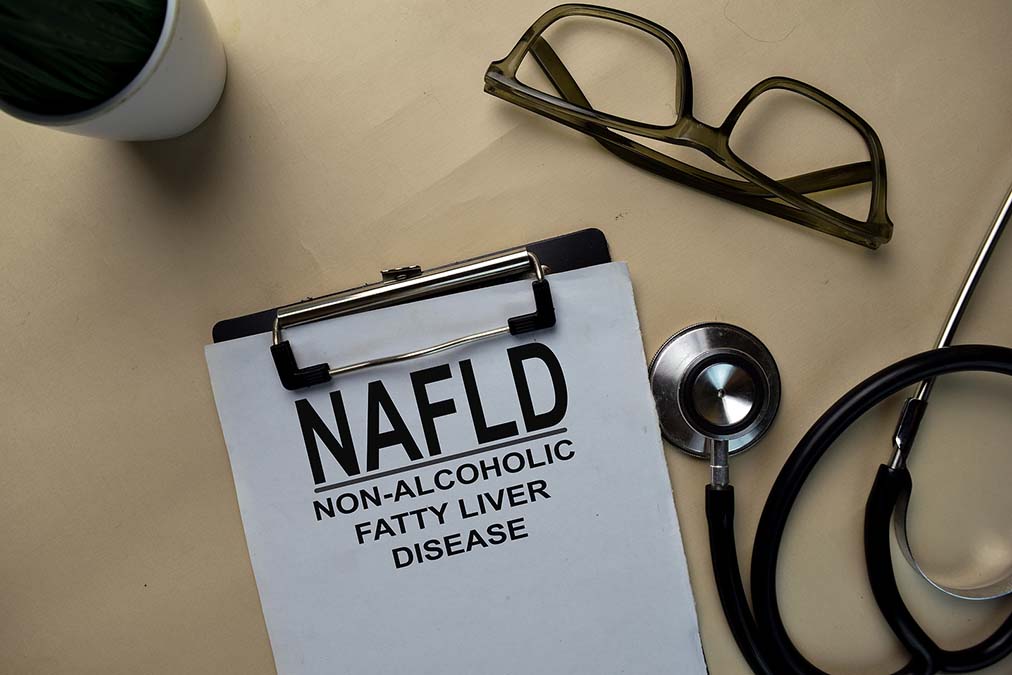 Nonalcoholic fatty liver disease (NAFLD) has become the new silent killer. More people have NAFLD than high blood pressure. And most of them don’t even know it.
Nonalcoholic fatty liver disease (NAFLD) has become the new silent killer. More people have NAFLD than high blood pressure. And most of them don’t even know it.
Indeed, if you’re overweight, there’s a 75–90% chance that you have NAFLD (whether or not you’ve been diagnosed).
According to a new study in the New England Journal of Medicine, this is a big deal. Because most people don’t experience any symptoms of NAFLD until it’s too late and they’re facing a liver transplant or death.
In the past, liver disease mostly resulted from hepatitis or excessive alcohol intake, although obesity and diabetes have now bypassed these as causes of liver disease.
So it’s surprising that numerous researchers from academic institutions all over the United States were shocked to find that fairly little research has examined the course of the disease.
They decided to close this research gap by identifying 1,773 NAFLD patients who had been diagnosed at several medical centers around the country.
They used medical data available for each patient to track their progress, symptoms, liver scans, co-occurring conditions, and deaths over a period of four years.
They split the subjects into five groups, depending on the severity of their disease.
-
1. Stages F0 to F2 are characterized by no (F0), mild (F1), or moderate (F2) fibrosis. People in F0 have only fat buildup in their liver, while those in F2 have moderate liver tissue scarring (fibrosis) but no symptoms of liver dysfunction.
2. In Stage F3, so much of the liver tissue has been scarred that it begins to show signs of dysfunction.
3. Stage F4 is characterized by cirrhosis, meaning that the liver has stopped functioning properly and symptoms have started appearing, including pain, yellowing of the skin, and so on.
The scientists discovered that the more advanced stages had much worse consequences than the earlier ones.
-
1. Mortality among the participants increased with the level of fibrosis and was highest for patients with cirrhosis (F4). Compared to people without NAFLD, those in stage F4 were almost seven times more likely to die.
2. Liver-related complications increased with the level of fibrosis, and liver transplants (or the need for them) was common among F4 patients. The complications included bleeding in the gastrointestinal tract, fluid buildup, encephalopathy (brain dysfunction), and liver cancer.
Those in the higher NAFLD stages were more likely to have diabetes and obesity, which are two common causes of NAFLD. They were also more likely to have substantially worse kidney function.
The scariest finding was that NAFLD was basically a silent killer. Symptoms are absent until patients enter stage F4, so they don’t know they have it until they are seven times more likely to die.
Therefore, it’s essential that you immediately take action to burn fat out of your liver before it progresses to F4. Fortunately, this is quite easy to do. Thousands of readers have already rid themselves of NAFLD using the simple natural steps explained here…

 Overcoming IBD
Overcoming IBD Multiple Sclerosis
Multiple Sclerosis Banishing Bronchitis
Banishing Bronchitis Gum Disease Gone
Gum Disease Gone Overcoming Onychomycosis
Overcoming Onychomycosis Neuropathy No More
Neuropathy No More The Prostate Protocol
The Prostate Protocol Brain Booster
Brain Booster
 Ironbound
Ironbound
 Solution for Shingles
Solution for Shingles
 The Bone Density Solution
The Bone Density Solution
 The Ultimate Healing Protocol
The Ultimate Healing Protocol
 The Parkinson's Protocol
The Parkinson's Protocol
 The Chronic Kidney Disease Solution
The Chronic Kidney Disease Solution
 Overthrowing Anxiety
Overthrowing Anxiety The Fatty Liver Solution
The Fatty Liver Solution The Hypothyroidism Solution
The Hypothyroidism Solution
 The End of Gout
The End of Gout The Blood Pressure Program
The Blood Pressure Program
 The Oxigized Cholesterol Strategy
The Oxigized Cholesterol Strategy
 Stop Snoring And Sleep Apnea Program
Stop Snoring And Sleep Apnea Program
 The Arthritis Strategy
The Arthritis Strategy The Vertigo & Dizziness Program
The Vertigo & Dizziness Program The 3-Step Diabetes Strategy
The 3-Step Diabetes Strategy Hemorrhoids Healing Protocol
Hemorrhoids Healing Protocol The Erectile Dysfunction Master
The Erectile Dysfunction Master Weight Loss Breeze
Weight Loss Breeze The IBS Program
The IBS Program The Insomnia Program
The Insomnia Program The Migraine and Headache Program
The Migraine and Headache Program The Neck Pain Solution
The Neck Pain Solution The Menopause Solution
The Menopause Solution The Ejaculation Master
The Ejaculation Master The TMJ Solution
The TMJ Solution The Acid Reflux Solution
The Acid Reflux Solution The Fibromyalgia Solution
The Fibromyalgia Solution The Psoriasis Strategy
The Psoriasis Strategy